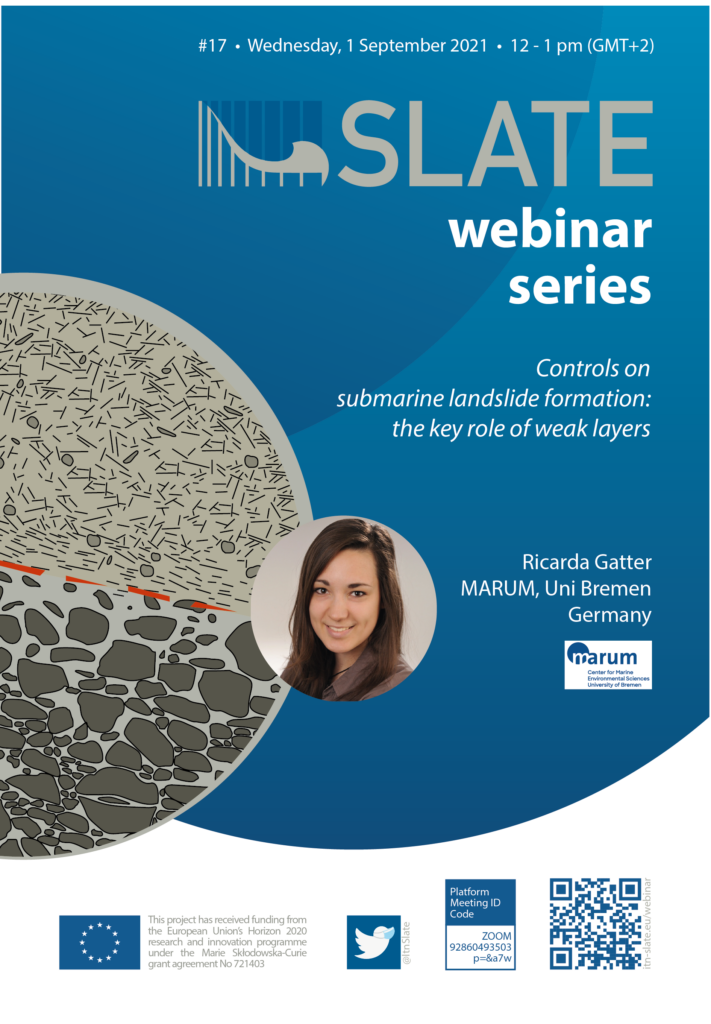
Submarine landslides are gravity-driven mass movements that occur in underwater slope settings worldwide. Despite their potential to damage expensive seafloor infrastructure such as pipelines or telecommunication cables and to generate hazardous tsunamis, many aspects of submarine landslide formation remain poorly understood. Many studies have proposed that the formation of submarine landslides on seemingly stable slopes may be explained by weak layers within the slope stratigraphy. Our understanding of weak layers, especially their compositional and structural characteristics, however, is restricted due to often limited data availability and resolution. This talk will focus on the integration of datasets at different scales and resolution in order to both qualitatively and quantitatively investigate the role of sediment structure and composition on weak layer and submarine landslide formation. A comprehensive literature review of published submarine landslide studies that examine the failure planes and apparent weak layers of historic and ancient submarine landslides, reveals that failure planes usually form in the vicinity of an interface between distinct lithologies that together comprise a weak layer. We demonstrate that weak layers predominantly relate to siliciclastic sediment sequences, but are also found in fossiliferous and volcaniclastic sediments. Despite often sharing a common primary lithology, physical and geotechnical properties of weak layers can vary greatly depending on the environmental setting (and therefore, the prevailing sedimentation regime). The review concludes that a robust investigation and characterisation of weak layers and their mechanisms in a submarine landslide setting is a function of their accurate identification, their recovery during sediment coring, and careful sampling as well as the choice of analytical methods. It is of critical importance to combine various sampling (e.g. coring and in-situ measurements) and analytical (e.g. sedimentological, geochemical, geotechnical) methods to investigate weak layers. Data from two selected case studies (the AFEN Slide and the Finneidfjord Slide) further demonstrate the importance of data integration in order to overcome limitations inherent to individual methods. In particular, high-resolution data from grain-scaled analyses, such as micro-CT (Computed Tomography) or SEM (Scanning Electron Microscopy) appear necessary in order to capture the processes that underlie and control weak layer formation. The Finneidfjord Slide offshore Norway, was investigated by means of high-resolution 3D micro-Computed Tomography imaging. Our results reveal clear compositional and structural differences between individual sub-units of the weak layer, as well as the background sediment. We find that pore space distribution is highly spatially variable and that such high variability may be masked by standard bulk porosity measurements. Bulk-porosity measurements work on a centimetre-scale, while the observed changes are found on a millimetre-scale. Such millimetre-scale differences, however, may be crucial for the formation of weak layers as they appear to dictate the location of the failure plane. These findings have important implications for understanding how weak layers are formed and their influence on failure plane formation.
- Wednesday, 1 September 2021
- 12 pm – 1 pm (GMT+2)
- via ZOOM
- permanent Zoom Link
- ID: 928 6049 3503 Code: p=&a7w
Webinar Flyer:


